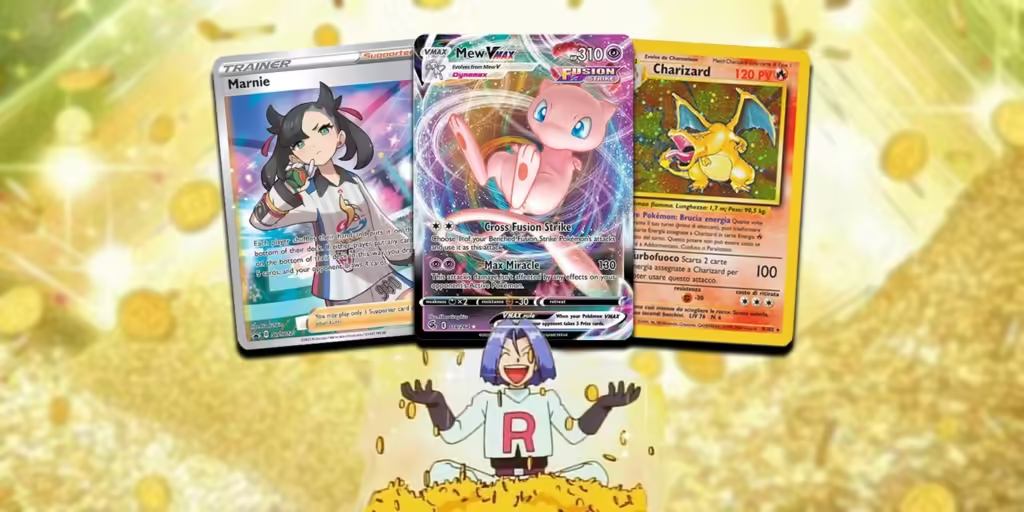Pokémon cards have captivated millions of fans worldwide, from casual collectors to serious players. As the Pokémon Trading Card Game (TCG) continues to grow in popularity, so does the demand for rare and valuable cards.
Buying Pokémon cards online can be convenient, but it also comes with challenges. Without physically inspecting the cards, you must be diligent in ensuring that you’re getting what you paid for. Here’s a guide to help you make informed decisions when purchasing Pokémon cards online.
1. Determine Your Purpose
Before you buy pokemon cards online, it’s essential to determine your goal. Are you looking to build a deck to play the game, complete a collection, or invest in rare and valuable cards? Your purpose will guide your purchase decisions. For instance:
- Players: If you’re building a deck to play, focus on finding competitive cards. You might need cards from the latest expansions that are legal in tournament play.
- Collectors: If you’re a collector, you may be looking for complete sets, rare cards, or first editions.
- Investors: If you’re buying cards as an investment, you’ll likely want cards in pristine condition or those that are already graded.
Each purpose requires a different approach to shopping, so understanding your intent will help you target the right cards and sellers.
2. Buy from Reputable Sellers
When buying Pokémon cards online, it’s crucial to purchase from reputable sellers. The internet is full of scammers, counterfeit cards, and sellers who misrepresent the condition of their products. To avoid falling victim to these pitfalls, consider the following:
- Online Marketplaces: Platforms like eBay, TCGPlayer, and Cardmarket are popular for buying Pokémon cards. Prior to making a purchase, always verify the seller’s ratings, reviews, and return guidelines.
- Specialized Websites: Some websites specialize in trading card games, such as Troll and Toad or Collector’s Cache. These sites often have detailed product descriptions and authenticity guarantees.
- Social Media Groups: If you buy from Facebook groups or other online communities, make sure you trust the seller and request references from previous buyers. Some groups have vetted sellers to ensure safe transactions.
3. Understand Card Rarity
Pokémon cards come in varying rarities, and understanding these distinctions can help you make informed purchasing decisions. Cards are categorized as:
- Common: Easily found in booster packs and worth less.
- Uncommon: Slightly harder to find but still abundant.
- Rare: More difficult to obtain and often sought after.
- Holo Rare: Features a holographic image on the card, making it more valuable than regular rares.
- Reverse Holo: The card’s background is holographic, but the Pokémon image itself is not.
- Ultra Rare: Includes full-art cards, EX/GX/V/VMAX cards, and secret rares. These are highly coveted by both players and collectors.
Knowing the rarity of the cards you want will help you understand their market value and make sure you’re paying a fair price.
4. Check the Card Condition
The condition of a Pokémon card significantly impacts its value, especially for collectors and investors. Cards are typically graded based on their physical state. These are the most common condition categories:
- Mint: The card is in perfect condition with no visible flaws.
- Near Mint (NM): The card is almost perfect but might have minor imperfections.
- Lightly Played (LP): The card has slight wear but no significant damage.
- Moderately Played (MP): The card shows visible wear but is still usable.
- Heavily Played (HP): The card has major wear, including scratches, creases, or bends.
- Damaged: The card is in poor condition and may not even be tournament-legal.
Always carefully read the condition descriptions and examine pictures provided by the seller. Some sellers may also offer graded cards, which have been professionally assessed and assigned a score, typically by organizations like PSA or Beckett.
5. Be Aware of Counterfeit Cards
The Pokémon card market, particularly for rare and valuable cards, is rife with counterfeits. Fake cards may be designed to look like originals but often lack the quality and detail of the real thing. To avoid purchasing counterfeits, consider these tips:
- Look for Clear Photos: Genuine sellers will provide high-quality images of the cards they are selling. Blurry or generic stock photos are red flags.
- Compare the Details: Counterfeit cards often have errors in text, fonts, or the overall design.
- Check the Seller’s Reputation: Established sellers with good reviews are less likely to sell counterfeit cards.
6. Understand Pricing Trends
Demand, condition, rarity, and the state of the TCG meta can all affect the value of Pokémon cards. Before purchasing, research the card’s market value. Tools like eBay’s “sold items” filter or sites like TCGPlayer can give you a good sense of current pricing. If a card is significantly cheaper than market value, be cautious, as it could indicate a scam or a damaged product.
7. Shipping and Packaging Considerations
When buying Pokémon cards online, ensure that the seller offers secure shipping. Cards should be packaged properly to avoid damage during transit. Look for sellers who ship cards in protective sleeves, top loaders, or bubble mailers. If you’re buying valuable cards, consider paying for tracked and insured shipping to safeguard your purchase.
Buy Pokemon Cards Online
Buying Pokémon cards online can be a rewarding experience, but it requires careful consideration to avoid common pitfalls. By determining your purpose, buying from reputable sellers, understanding card rarity, and checking for authenticity and condition, you can confidently navigate the online marketplace.
Whether you’re a player, collector, or investor, these tips will help you make smart purchasing decisions and enjoy your Pokémon card journey.







